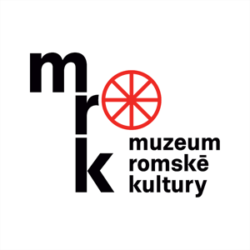Ladislav Stockinger
Ladislav Stockinger (born 1930, Prague – year of death unknown)
-
Testimony abstract
Ladislav Stockinger spent his childhood in the village of Plavsko [Jindřichův Hradec district] in southern Bohemia, where his family occupied a large house together with three or four other families. He was the illegitimate son of an agricultural worker, Růžena Vrba (born 1904), who brought up the boy and his five younger siblings with their stepfather, Antonín Vrba (born 1906), who worked as a forestry worker. The older of the two sisters, Josefa, was born in 1933, and eight years later Marie was born. Brothers Jan, Karel and Jiří were born in 1935, 1936 and 1939. The Stockinger family lived in the Roma and Sinti community, but also close to the Vrba and Studený families, who were showpeople. Relations between the Roma and other Czechs, whom he called bumpkins, were not good. There were a lot of Roma living in the village and he said that during the war the neighbours tried to get rid of them.
Ladislav Stockinger attended school with his siblings in Plavsko. In 1942,[1] the gendarmes occupied the whole house so that no one could escape, and they took everyone to the prison in České Budějovice for an inventory of "gypsies and gypsy miscegenates".[2] Both the Roma and the secular families of the Studený and Vrba families were taken from Plavsko. The next morning they were all sent to the so-called Gypsy camp in Lety near Písek.
Upon arrival, the newly-arrived prisoners had to go one by one to the assembly yard, where men, women and children were separated. Among the Czech guards who took part in the reception of prisoners or supervised the work, he mentions Štěrba[3] and [Josef] Hovorka. Příchozí museli odložit všechny své věci a namísto nich dostali vězeňské mundúry – The new arrivals had to put away all their belongings and instead were given prison uniforms – government-issue underwear, a black shirt, black trousers and clogs. The prisoners were then marched into the washroom and all their hair was cut off.
The camp on the edge of the forest was surrounded by a wooden fence and a wire mesh. Inside were rows of huts and a building that belonged to the German camp commander. Some of the prisoners who, at the time of Stockinger's arrival, were cleaning the camp, helping in the kitchen, or in the shoemaker's or tailor's workshops, were said to have been interned at Lety earlier, when it was still a labour camp. However, they were kept outside the inner part of the camp. The children, including the then twelve-year-old Ladislav, lived in three or four long military barracks and slept on three-storey bunk beds; they covered themselves with horse blankets. In each barrack there were pots or buckets for urination. Around the barracks was an assembly yard two or three metres wide, where prisoners from several barracks assembled at the same time each day. In the morning, they went to do drill, or they carried the excrement from the cesspit outside the camp boundary. During the day, Stockinger, for example, watered tomatoes, red cabbage and other vegetables that the camp authorities grew in the surrounding pastures. The women worked in the quarry[4] and the men in the forest. They got up for work at different times, but sometimes as early as five o'clock. Breakfast was coffee and bread with jam. At noon the prisoners were given some red cabbage soup. Some days when they were not working, the evening roll call took place in the barracks, otherwise outside. The women returned from work in the afternoon.
Each barrack had its own leader from among the older prisoners. The female leaders, who also distributed food, for example, lived together in a special room in the block. They also had their children with them, and some of the leaders were said to steal from others so that their children would not suffer from hunger. Each barrack had its own leader from among the older prisoners. The female leaders, who also distributed food, for example, lived together in a special room in the block. They also had their children with them,[5] and some of the leaders were said to steal from others so that their children would not suffer from hunger.
Ladislav Stockinger's mother died of typhus in the camp, and he discovered her body while foraging for food in the camp in order to survive. His stepfather was reportedly executed in Telč.
Among the prisoners, an elderly man, Peldr, had a privileged status,[6] his wife[7] worked in the kitchen. He was apparently a scoundrel. He rode horses outside the camp, delivered mail, and was supposed to deliver packages to the prisoners – but Stockinger saw him keep them for himself and his family.
During forest work, when they were collecting wood outside the camp, he and a fellow prisoner, Vrba,[8] attempted to escape.[9] They threw away their wood on the way and somewhere after Mirovice they jumped on the first train to Prague. Unnoticed by anyone, they reached the capital and there they decided to hide at his friend's uncle named Kočka. After two weeks, however, the uncle reported them, and both boys, as minors, went to an institution for a while and then back to Lety. They were given a beating with truncheons, then they were chained together by their legs and led around the camp, and they even had to go to the toilet together. They received beatings from whoever was on duty at the time, such as the aforementioned Štěrba. They were kept in a wagon for three or four months. These wagons, already without wheels and consisting only of bare planks, were confiscated from the interned nomadic Roma and left in the camp. They served as mortuaries, especially during the typhus epidemic, where corpses were deposited that could not be taken outside the camp. Beatings were part of the punishment and the boys were not given food, so they depended on the help of prisoners, such as old women, who sometimes threw them a piece of cabbage stalk or a crust on the way to the washrooms. The girl who was supposed to guard them in the woods was punished by being hung up by her arms from a pole near the kitchen.[10]
In May 1943, the entire Stockinger family was released.[11]
- [1] The survivor gives the year as 1941 but was not sure. However, the census was taken at the beginning of August 1942.
- [2] It was a collection point for transport to the camp. (ed.)
- [3] Although other survivors have also mentioned Štěrba as a guard at Lety (see Paul Polansky, A Black Silence, 1998), he is not to be found in the documents relating to the camp. (ed.)
- [4] It was located at the foot of Borek Hill, just under two kilometres from the camp (ed.).
- [5] See the memories of Anna Růžičková, called Nány, in the database, who lived like this with her aunts - supervisors - in the "children's" house. (ed.)
- [6] Jaroslav Pölderl. (ed.)
- [7] Possibly Marie Lagronová. (ed.)
- [8] Josef (ed.)
- [9] In August 1943. (ed.)
- [10] It was probably Jana Marhoulová nicknamed Žanka. (ed.)
- [11] This was the last selection before the Roma were transported to Auschwitz II-Birkenau. During the selection process, representatives of the German Criminal Police in Prague excluded 183 persons who were released to go home.
After the war he lived with his family in South Bohemia. In 1948, at the age of eighteen, he was accused of espionage under the communist regime, along with fifteen other people, and sent to the Bratrství camp at the Jáchymov uranium mines, and later transferred to the Vojna camp in Příbram. In 1957 he was amnestied and released. He worked mainly as a labourer until his retirement.
How to cite abstract
Abstract of testimony from: HORVÁTHOVÁ, Jana a kol. ... to jsou těžké vzpomínky. 1. svazek. Vzpomínky Romů a Sintů na život před válkou a v protektorátu. Brno: Větrné mlýny, Muzeum romské kultury, 2021, 344-345, 364-366, 383, 395, 409-410, 435, 455-456, 484-485, 490-491, 505, 542, 555-556, 568, 698-699. Testimonies of the Roma and Sinti. Project of the Prague Forum for Romani Histories, https://www.romatestimonies.com/testimony/ladislav-stockinger (accessed 10/18/2025) -
Origin of Testimony
The interview with Ladislav Stockinger was recorded by the Museum of Romani Culture in 1997. The information also comes from an interview available at the United States Holocaust Museum in Washington, D.C., from Monika Rychlíková's 2002 documentary film ...They're Painful Memories, and from Paul Polansky's 1998 book, Black Silence.
-
Where to find this testimony




